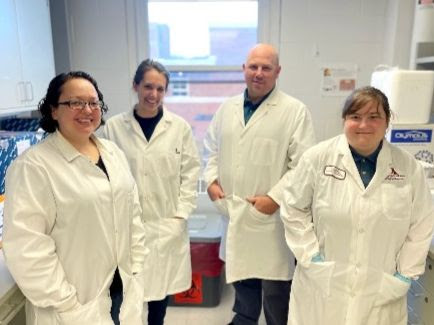Taking a proactive approach to Salmonella outbreaks in turkey
January 17, 2022

VBS Professor Tim Johnson recently discussed a Salmonella outbreak associated with ground turkey products in late 2017, caused by the bacterium S. Reading. His team was featured in the CVM Profiles write up, "For University scientists a new strategy to tackle Salmonella," by Mike Oakes.
Johnson and his research team began to take a closer look at S. Reading after hearing from turkey producers around that time about sharp increases in S. Reading detection during surveillance relative to other Salmonellas. Using high-resolution whole-genome sequencing while assessing unique phenotypic traits, the team detected a new strain of the S. Reading bacterium. This new strain had coincided with the outbreak and contributed to the spike in S. Reading detection the producers were reporting. However, they found that the new strain was genetically different from the well-known strain that had been around for a couple of decades. In addition, their method of detection varied from the method of detection used by the Center for Disease Control (CDC) to investigate the 2017 outbreak, because they did not have the same resolution needed to locate the difference between these strains.
Johnson explains, “A company could build their own personalized dashboard based on the strains that they detect over time and use that information to get ahead of the game. The goal is to even the playing field and prevent large outbreaks like those we have seen in the past.”
(Photo of Johnson lab researchers from left to right: Bonnie Weber, Elizabeth Miller, Tim Johnson, and Abby Johnson. Photo taken by Mike Oakes.)